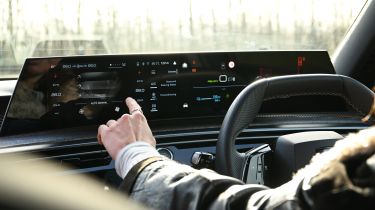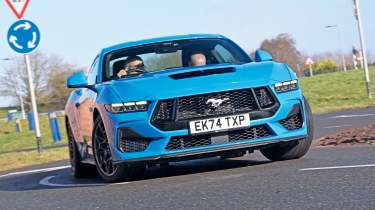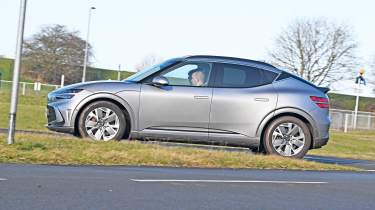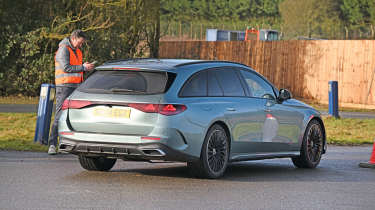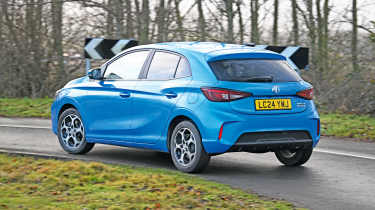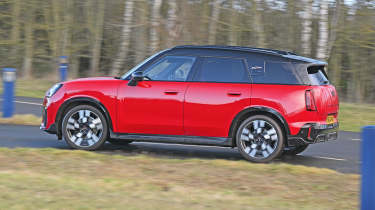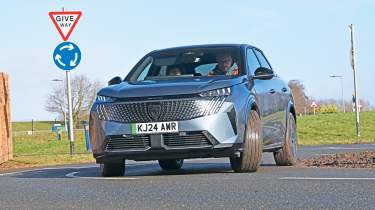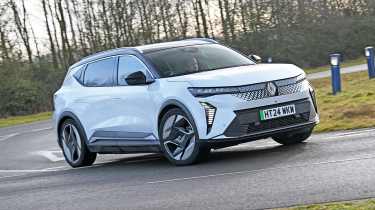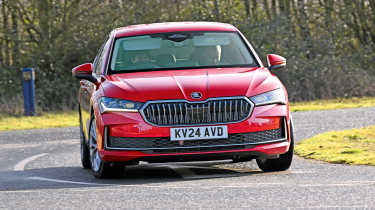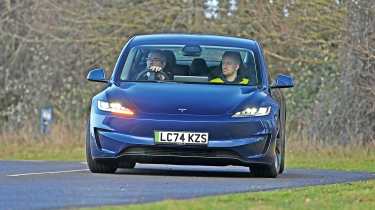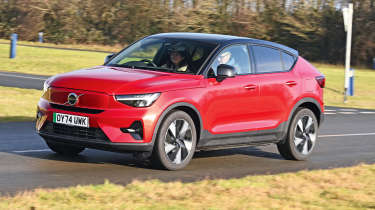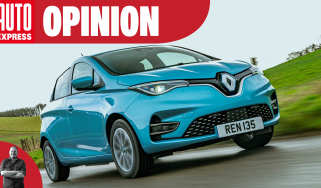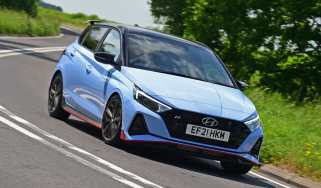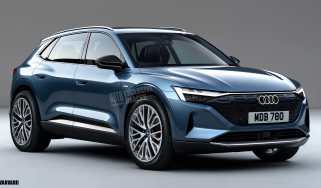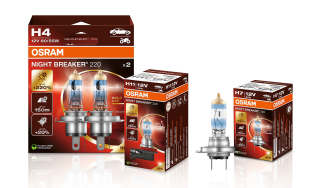Best car voice control systems tested and rated
Voice control is common in all manner of devices these days but how do the top in-car systems perform under pressure?
At face value, in-car voice control technology is a great step towards removing pesky distractions for drivers such as reaching for a button or finding something in a touchscreen menu. If you’ve attempted to use one of these systems in the real world, however, you’ll know that the experience can become very frustrating if they refuse to listen, can’t understand your commands or appear to have taken on a mind of their own.
Voice recognition tech is fast becoming a fixture of modern life with people becoming very accustomed to chatting away to smart speakers and mobile devices. Talking to your car, once the preserve of certified lunatics, is also becoming the norm thanks to voice control now being a common feature on new cars right across the market. The question we wanted to explore was, which in-car voice control tech is best?
Some voice recognition systems will enrich your driving experience and others will leave you tearing your hair out. In order to find out which is which, our team of experts tested ten of the latest cars with the best infotainment technology that you can currently buy in the UK as part of our full in-car infotainment test. We’ve tallied up the results right here…
How we tested the voice control systems
Many car models give you the option of using your voice to change certain settings, as an alternative to using the touchscreen. But how well does this work in practice? Our testers were told to issue the following commands:
- Set sat-nav: “Take me to London” and “Directions to British Motor Museum"
- Change radio: “Play BBC Radio 2”
- Change the temperature: “Set the temperature to 24 degrees”
- Set heated seats: “Turn the heated seats on” and “Turn the passenger heated seat on”
- Ask about the weather: “What’s the weather like today?”
- Charging or fuel station: “Where is the nearest charging station?” or “Where is the nearest fuel station?”
- Turn off Lane-Keep Assist: “Turn off Lane-Keep Assist”
Our final test involved turning the voice recognition on via its activation button and then waiting in silence to see how long it took to turn off by itself.
Results
So how did each system behave during testing, and did we run into any mishaps? Read on to find the results of our in-depth testing.
Ford Mustang
The Ford Mustang’s voice command is activated by a ‘wake word’, which is ‘OK, Ford’ by default,but can be changed to ‘OK, FordPass’, ‘OK, Ford Sync’ or ‘Hello, Ford’. We found the satellite navigation responds quickly to our command – it then gives you a list of locations and you choose the number listed next to it, which was the case for the fuel station command, too.
The temperature change also worked immediately and the car confirms the action is complete with a voice note and a bong sound afterwards.
“Play BBC Radio 2” only worked the second time around, and the car didn’t respond when we asked for the heated seats to be turned on and the lane-keeping assist to be turned off. As for our weather report, the Mustang gave a clear and concise overview of the conditions for the day. Once we activated the voice command, it took 35 seconds for the car to stop listening.
Genesis GV60
To its credit, the Genesis GV60’s voice command system is simple and effective, although we found a few flaws. The sat-nav process was easy, “take me to London” giving us a single location with a confirmation ‘yes’ or ‘no’ to begin the route.
The British Motor Museum gave us a list of places with numbers to choose from, again with confirmation needed, and the same applied to our charging station query. Our “Play BBC Radio 2” request led us to Planet Rock instead, although we shouldn’t have been too surprised, given that the Genesis’ long-term custodian is our chief sub-editor, who's a renowned fan of heavy metal.
Both heated front seats could be turned on independently of each other without hassle, but the temperature was set to 27 degrees instead of 24 degrees. The weather report was succinct and worked well, but as in most other cars, the lane-keep assist function couldn’t be turned off. The voice command switches off after 22 seconds if you keep quiet.
Mercedes E-Class
Mercedes was one of the first manufacturers to integrate voice controls into its cars and decades of use have benefited the German firm’s ‘Hey Mercedes’ technology. With the starry glint in the top of the touchscreen letting us know it’s listening, the Mercedes E-Class responded quickly to our sat-nav commands, with a list of possible locations to choose from.
The radio request also worked immediately, as did both heated seats with a statement confirming our commands had been received.
The weather report was the best overall in our test, with not only a brief audio description being given, but also a visual layout of what conditions to expect for the coming days being presented on the central screen as well.
Our only slight problems were with the lane-keep assist, where the car merely said “an error occurred”, and the fact the only voice prompt is ‘Hey Mercedes’. It takes nine seconds for the system to stop listening if you remain silent.
MG3
The MG3 was the cheapest car in this test and as a consequence it has the most basic voice-activation software. The command system works via your smartphone and it will only connect though a cable, so as long as you’re happy with Apple’s Siri or Android’s Google Assistant, then you’ll be fine here.
The sat-nav, radio and fuel station location requests all worked well and the system gave us a brief weather report. The MG3 replied with a rather meagre “I can’t help with that” in response to our heated seat command and our lane-keep assist request fell on deaf ears. The voice-activated system turns off after seven seconds of silence, which was one of the speediest in the test.
MINI Countryman
The MINI Countryman’s voice activation can only be engaged by saying “Hey MINI” – but this can be turned off if you just want the system to start via the physical button on the steering wheel. The “take me to London” request (or any initial sat-nav input) results in the MINI asking “should I set the destination?”. It then produces a selection of routes and automatically starts with the quickest one if you wait a few seconds.
A request to turn on the radio was dealt with quickly and a prompt to switch on the seat heating resulted in a response of “which seat should I turn on?”, which feels a little needless to us. Asking the MINI where the nearest charging station is results in a list of nearby locations, with the car reading these out – you have to speak the number next to each one to choose. As for the lane-keep assist, the MINI didn’t recognise this order. And, surprisingly, it responded “sorry, I don’t know” to our query about the weather forecast.
Peugeot E-3008
The Peugeot E-3008’s activation phrase is ‘OK, Peugeot’ and not once did it fail to listen after this had been said.
The sat-nav will eventually start by itself if you don’t choose one of the various routes or locations, which we quite liked. However, for specific places such as charging stations or the British Motor Museum, we had to confirm the destination was correct on the screen. The radio changed to BBC Radio 2 quickly when we asked, and there was a little note on the screen to acknowledge this.
Unlike some of the other cars in this test, both front heated seats turned on at our request. The weather report failed, though, saying “I didn’t understand” before switching off. The lane-keep assist went through the same process.
There’s no script on screen as you talk, but there is a feedback graphic that sadly doesn’t match your speech. As for the automatic turn-off function, this takes a mere six seconds – the fastest in this test.
Renault Scenic
The Renault Scenic uses a Google-based voice-recognition service. Our sat-nav commands were met with a single route, but it did show up relatively quickly. The radio was able to play BBC Radio 2 almost immediately, with audio confirmation of the choice. Again, the Scenic let us know audibly that our request for a change in temperature and the instructions to heat either front seat had been complied with.
The brief weather report was audio-only, and one of the few instances where we had to interact with the touchscreen was for the charging station search.
This gave a long list of potential top-up points – but it does select the first entry after a few seconds. The lane-keep assist, as expected by this point, couldn’t be turned off, because we got a “sorry, I don’t understand” message. The voice-recognition system switches off automatically after 11 seconds.
Skoda Superb
While Skoda markets its voice-assistant technology as Laura, you can make up your own activation word. We found the default ‘OK Laura’ activation to respond perfectly, with “take me to London” and “take me to the British Motor Museum” resulting in quick choices of directions and the navigation starting soon after. Plus there were no issues with asking the Skoda Superb's system to change the radio station, the temperature or either heated front seat.
Asking for a weather update didn’t go so well, though, because we got an “I’m not sure, sorry”. But nearby fuel station locations and directions were speedily displayed upon request, and you then chose one by number.
The Skoda was the only car to recognise our lane-keep assist command, putting the function on the screen for us to turn off physically. It took 12 seconds for Laura to stop listening after staying silent and as you speak, your words are displayed on the screen – which is a nice touch.
Tesla Model 3
With the Tesla Model 3 (and most of our cars on test) you’ll find a choice between activating the voice command with speech or through a button on the steering wheel – it’s one of the few physical buttons in the Tesla’s cabin. The sat-nav works well and comes up with routes quickly, although we had to confirm our choice, which felt like an unnecessary step.
The Tesla thought our “take me to British Motor Museum” request was a joke at first, although it understood the instruction the second time around. The navigation to the nearest charging station was pain-free, though.
The radio station played almost immediately and the temperature setting worked perfectly as well. Our “turn off lane-keep assist” was not understood, though, with the car replying “could not turn off climate keeper”. The Tesla does give a useful script of what you’re saying, however, so you know it’s getting your words right, and it takes 15 seconds to automatically turn off after activation.
Volvo EC40
The Volvo EC40 uses a Google-based infotainment system so the voice-recognition tech works in the same way as any other set-up running the firm’s software. You simply start by saying ‘Hey Google’ and the voice recognition begins almost immediately, with a note on the central touchscreen saying ‘Hi, how can I help?’. To work the sat-nav we had to say “directions”, then we could request directions to London or the British Motor Museum.
The radio request command worked perfectly, as did the heated seats, which can also be chosen individually. The ambient temperature was also set without hassle, and the tech pointed out a list of the nearest charging stations. The weather description was only a brief audio-only statement, though. After turning the voice-recognition service on, you’ll have to wait 23 seconds for it to stop listening.
Now you can buy a car through our network of top dealers around the UK. Search for the latest deals…
Find a car with the experts

